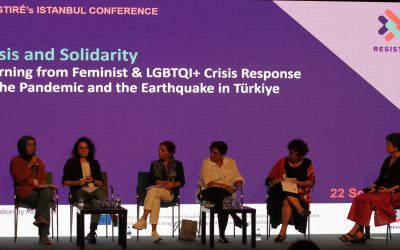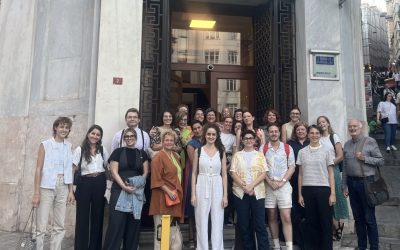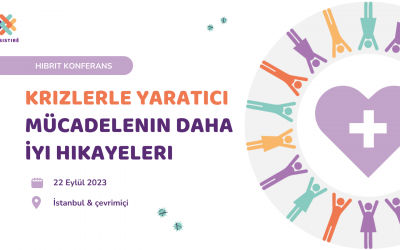With RESISTIRÉ’s second cycle starting, project partners Clare Stovell and Alexis Still give a brief summary of our Rapid Assessment Surveys mapping activities and present some of the key features that set the RAS identified as ‘promising’ apart.
Rapid Assessment Surveys (RAS) are studies conducted on the initiative of lobby groups, scientists or official agencies that provide swift, research-based assessments. These have played a particularly important role in tracking the fast-paced developments of the COVID-19 pandemic.
As part of the RESISTIRÉ project, 30 National Researchers representing countries across Europe undertook a large-scale mapping project of RAS from May to July 2021. They each identified around 10 RAS from their country that provide data and evidence on the economic, social and environmental impacts of the COVID-19 pandemic from a gender+ perspective. A ‘gender+’ approach highlights gender relations and gender inequalities, and how these intersect with other inequalities in regards to, in this case, policies and initiatives arising from the COVID-19 pandemic.
Snapshot of surveys undertaken during Covid-19
The 291 RAS mapped by National Researchers provide a snapshot of the surveys being undertaken during the pandemic at a European level:
- Most studies involved the analysis of primary data collected since the beginning of the pandemic, although some RAS analysed existing data through a COVID-19 lens.
- The majority were one-off studies and were produced by either higher education institutions or NGOs, however other author types were identified by researchers such as independent research organisations, trade unions, businesses and banks.
- A key element of the mapping was identifying whether RAS had captured data on inequalities. The most common inequality grounds identified were sex, gender, age, and socioeconomic status. However, while many RAS engaged with sex and/or gender as a variable, fewer went on to analyse findings through a gender+ lens, therefore limiting our understanding of the intersectional impacts of COVID-19 on inequalities and the experiences of marginalised groups.
- Only 47 out of the 291 RAS were identified as addressing stereotypes such as women having primary responsibility for caregiving and domestic work, racial stereotypes and those who are considered ‘at risk’ or ‘vulnerable’.
What makes a RAS promising for gender+ analysis?
As part of the mapping in the first cycle of the RESISTIRÉ project, National Researchers were asked to identify the most promising RAS for gender+ analysis in their country, so that the project can establish links, collaborate and exchange data with the bodies that manage these surveys. Factors taken into account when identifying specific RAS as promising varied from the nature of the research design to the analysis and findings.
Longitudinal studies were often identified by National Researchers as particularly promising, since the repeated data collection points allowed for changes across the waves of the pandemic to be analysed. One example of a longitudinal RAS is CaixaBank’s ‘Inequality Tracker’. This survey uses anonymised bank records from Spain’s working population to track income inequalities over the course of the pandemic. It has found that inequalities rose in lockdown months and this was especially pronounced among migrants and those in regions that are dependent on tourism. By undertaking a longitudinal study, this RAS have been able to map the experiences of individuals over time and add follow up questions to address issues arising from ongoing analysis and national developments.
Several studies were deemed promising due to their consideration of gender and gender+ approaches from the outset. This included RAS employing feminist methodologies (e.g. Turkish study ‘Being a Woman During a Pandemic’); considering the needs of vulnerable and/or underexplored groups (e.g. Spanish study ‘Violence and Covid-19: Impact on women and the LGBTIQ+ Community’); and focusing on how gender issues affected specific domains (e.g. Italian study ‘Women and Work: Lights and shadows of the impact of COVID-19 on the lives of female workers’). In some cases, RAS were commended for identifying that a gender+ approach was lacking and actively incorporating this into subsequent waves of the project (e.g. Dutch study ‘Impact of corona measures on stress, relationships and intrafamily violence’). Other RAS were deemed promising due to their gender+ exploration of topics that have received limited attention. For example, ‘Love, Intimacy and Sexuality in COVID-19’ focused on the effects of the pandemic on the private relationships of Austrian people. This impactful study was featured on several news media outlets.
Studies that had already made a tangible impact, for example on policy making, were often reported as promising. Researchers indicated that the potential for impact increased when RAS included short cycles and regular reporting; questions that were adapted to changing circumstances allowing for fast feedback on the behaviour of people; and a large sample size, which gave credibility. An example of this is ‘The Big Corona Study’ organised by a consortium of universities in Belgium, which had a very short fortnightly cycle and a large sample of over 3 million respondents. As a result, this RAS was highlighted as a key study through which to explore inequalities and affect change.
Finally, many of the RAS identified as promising were broad in scope, covering many policy domains. For example, the ‘Austrian Corona Panel Project’ asked respondents about all aspects of their life during the pandemic and provided rich data for longitudinal analysis. This enabled a more cohesive view of the economic, social or political situation of the country, as well as an exploration of topics that might otherwise have been missed in more focused surveys, such as political trust and perception of the economy.
Clare Stovell and Alexis Still, Oxford Brookes University



